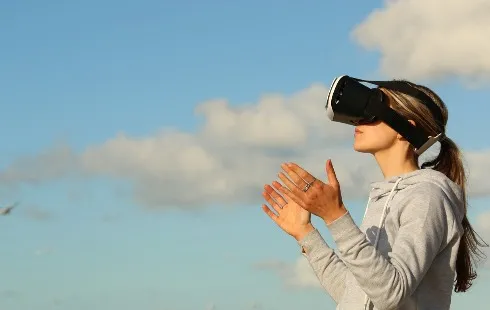
Gonadorelin Peptide: A Gateway to Understanding Endocrine Dynamics
Section: Science
 Recent advancements in technology have led to the development of mixed reality glasses that aim to assist individuals grappling with partial vision loss, particularly those who have experienced a stroke or other brain injuries. This groundbreaking innovation, spearheaded by a research team at the University of Alberta, provides a new avenue for enhancing the quality of life for patients suffering from conditions such as hemianopsia.
Recent advancements in technology have led to the development of mixed reality glasses that aim to assist individuals grappling with partial vision loss, particularly those who have experienced a stroke or other brain injuries. This groundbreaking innovation, spearheaded by a research team at the University of Alberta, provides a new avenue for enhancing the quality of life for patients suffering from conditions such as hemianopsia.
Hemianopsia, characterized by the loss of half of the visual field in both eyes, typically arises from damage to the brain's visual pathways rather than the eyes themselves. For instance, damage to the right hemisphere of the brain can result in impaired peripheral vision on the left side. According to the American Stroke Association, approximately 30% of stroke survivors encounter some form of vision loss.
Glenn Calverley, a 57-year-old stroke survivor, vividly describes his challenges with vision loss, which includes seeing spots that do not exist and significant blind spots in his peripheral vision. This condition can severely impact daily activities, making simple tasks like walking down the street or watching television fraught with difficulty.
Historically, treatment options for hemianopsia have been limited, often involving prisms and eye movement training. These methods can be insufficient, leading many patients to withdraw from work and face increased risks when navigating their environments.
The newly developed mixed reality glasses utilize advanced software to process real-time video feeds from a head-mounted camera. This technology effectively compresses the visual environment into the areas of the visual field that remain intact. Project lead Edsel Ing, an experienced ophthalmologist, has expressed his frustration over the lack of effective treatments for vision loss until now. He emphasizes the potential of these mixed reality glasses to provide patients with a renewed sense of their visual surroundings.
The glasses, which are designed to work with the Microsoft HoloLens 2, are not intended for gaming like traditional virtual reality devices; instead, they allow users to see their environment along with superimposed images designed to enhance their vision capabilities. The glasses provide a unique "picture-in-picture" navigation system, which has been made available for free as a proof of concept in academic literature, encouraging further development and customization.
In trials conducted with five participants, including Calverley, the glasses demonstrated significant promise. Participants navigated a 50-meter course that included various obstacles. While three individuals without the glasses collided with multiple obstacles, only one participant wearing the glasses encountered any issues. Feedback indicated that the glasses were rated as 74.3 out of 100 in terms of helpfulness.
Calverley, who has been actively engaged in rehabilitation since his stroke, reported that the mixed reality glasses aided him in enhancing his awareness of his surroundings. By integrating visual cues within his remaining field of vision, he was able to navigate obstacles more effectively.
Looking ahead, Ing and his team are exploring solutions to address additional challenges faced by stroke and brain injury patients, such as torsional diplopia and nystagmus. Ing asserts that until more permanent solutions are found that can repair brain injuries or restore visual pathways, the collaboration between computer scientists and medical professionals remains crucial for improving the lives of those affected by visual impairments.

Section: Science

Section: Health

Section: Arts

Section: Health

Section: Science

Section: News

Section: News

Section: Health Insurance

Section: Health

Section: News
Health Insurance in Germany is compulsory and sometimes complicated, not to mention expensive. As an expat, you are required to navigate this landscape within weeks of arriving, so check our FAQ on PKV. For our guide on resources and access to agents who can give you a competitive quote, try our PKV Cost comparison tool.
Germany is famous for its medical expertise and extensive number of hospitals and clinics. See this comprehensive directory of hospitals and clinics across the country, complete with links to their websites, addresses, contact info, and specializations/services.
What do you get when you blend the tradition of American stand-up comedy with themes that are anything but funny? Pair that with a captivating performer and author like Claus von Wagner, and you're guaranteed a fantastic evening. Projekt Equilibrium is his latest program, which explores the quest...



No comments yet. Be the first to comment!